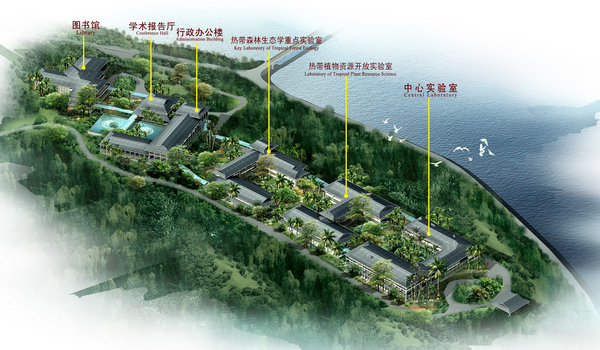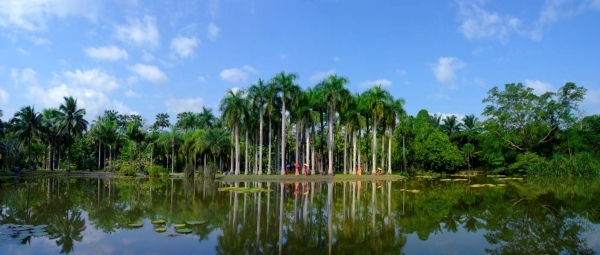
Xishuangbanna Tropical Botanical Garden (XTBG) of Chinese Academy of Sciences (CAS) was founded under the leadership of the late eminent botanist Cai Xitao in 1959. Geographically, it lies between 101°25′E,21°41′N, with an elevation of 570 m above sea level. Its average annual temperature is 21.4℃. Following its separation from Kunming Institute of Botany and its combination with Kunming Institute of Ecology, the new Xishuangbanna Tropical Botanical Garden (XTBG) came into being in 1997. It is a comprehensive research institution engaged in scientific research, species preservation, public education, and S&T development, and a well-known scenic spot as well.
With Yunnan Province as its focal working area,XTBG probes into the impact of human activities and climate change on ecosystem structures and services as well as endangerment mechanism of species. Effective conservation, sustainable development and the utilization of biological resources are primary goals of XTBG. Its scientific research focuses on forest ecosystem ecology, conservation biology and resource plant development, with 27 research groups related to those research fields aforementioned.
XTBG’s 1125-hectare area includes a 250-hectare patch of well-preserved primary tropical rainforest. XTBG’s excellent preservation of over 13,000 species of plants in its 35 living collections has enhanced its reputation for being one of the most diverse botanical gardens for outdoor plants in the world.
Since 2001, 600 important scientific research projects have been conducted by XTBG, among which 20 have been awarded ministerial or provincial prizes. In addition, 2,500 academic papers and 30 monographs have been published and 60 national patents have been granted for scientific innovations.
XTBG is home to the CAS Key Laboratory of Tropical Forest Ecology, the CAS Key Laboratory of Tropical Plant Resources and Sustainable Use, the Center for Integrative Conservation, two national field research stations (the Xishuangbanna Tropical Rainforest Ecosystem Station and the Ailaoshan Station for Forest Ecosystem Studies), the Yuanjiang Hot and Dry Valley Observation Station, the Public Technology Service Center, the Germplasm Bank for Rare and Endangered Plants, the Tropical Plant Herbarium, the Department of Gardening and Horticulture, the Department of Public Education and Tourism, and the Jingdong Subtropical Botanical Garden, etc.
As of November 2013, XTBG had 343 staff members, including 30 professors and 56 associate professors or the equivalent.
XTBG offers master’s and Ph.D. programs in ecology and in plant sciences, as well as a professional master’s degree program in biological engineering. Altogether, 145 master’s students and 89 Ph.D. students are currently enrolled. XTBG’s postdoctoral program in biology was initiated in 2004. As of 2013, XTBG had 11 postdoctoral researchers.
XTBG has developed substantial ties with international organizations and with botanical gardens, universities and academic research institutions in more than 50 countries/regions. Each year, more than 200 foreign scientists come to XTBG for international conferences, workshops and training courses or to conduct research or pursue academic degrees.
As a National 5A Tourist Attraction, the nation’s highest level for scenic attractions, XTBG receives 650,000 visitors each year. In addition, XTBG is a National Popular Science Education Base, a National Base for Environmental Protection and Popular Science, and a Patriotic Education Base.

Guide map of Scientific Research Center

Palm Garden
| Menglun, Mengla, Yunnan 666303, China. Copyright XTBG 2005-2011 Powered by XTBG Information Center |